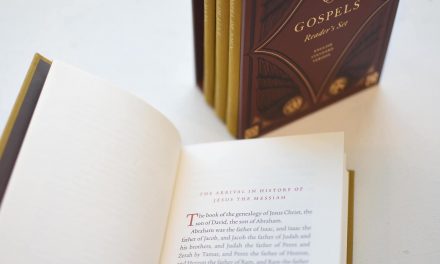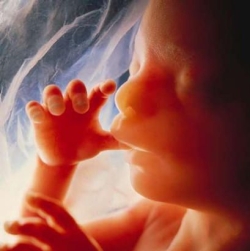Father Stefano de Fiores SSM died last Saturday. He was 79.
A Google search uncovers only one book of his translated into English. Jesus Living in Mary is a step-by-step handbook on the Marian spirituality espoused by St Louis de Montfort. (It is not a book I have read, but that will be quickly remedied, since I’ve ordered a copy online.)
Fiores is much better known in continental Europe. He was perhaps the greatest Mariologist of the twentieth century, or at least its second half. He taught at the Gregorian, the Lateran and the Marianum, and published more than thirty books on Mary, including a definitive three-volume dictionary of Mariology.
A friend who is better acquainted with his Italian works credits him for providing a theological basis to popular devotion:
Unlike some post Vatican II theologians who would view popular piety as excessive, outdated or superstitious, Fr Stefano sought to develop, purify and build upon Marian piety and devotion in order to present Mary the mother of Jesus as an example for Christians in the contemporary age.
This is a view which was probably shared by Fiores himself. In a 2006 interview with Zenit, he presented his three-volume dictionary as a reponse to what he called “a Mariological crisis.” It reached its zenith in the 1970s, when Fiores received advice from various quarters to embrace the times and abandon Mariology. The interview is in Italian, but my aforementioned friend has kindly furnished a rough translation:
It was at that point that I intensified my study of the Mother of Jesus, working to uncover her presence in popular piety, the liturgy and contemporary theology . . . above all I commented on chapter 8 of Lumen Gentium of the Second Vatican Council. I found myself favoured when Paul VI’s Marialis Cultus (1974) and John Paul II’s Redemptoris Mater (1987) relaunched Mary in the Church and the world.
The dictionary would like to represent the mature fruit of a serious Italian Mariology, which would undo the trivialised discussion about Mary and extract the Marian cult from devotionalism or from vulgar Christianity, where it has been banished by the intelligentsia of liberal theology.
These are the sorts of developments which cause my generation to view “the Spirit of Vatican II” with suspicion, and even cynicism. There is a lot of merit in the case that the Council was greater than the documents it produced. But I do wonder at those critics who accuse successive popes of systematically betraying the Council.
The fortunes of the cult of Mary make a good example. Was marginalisaton of the cult of Mary — and, indeed, the discipline of Mariology — a legitimate manifestation of the Spirit of the Council? Were the efforts by Paul and John Paul to revive Marian devotion a betrayal of that Spirit? Or was that short-lived marginalisation an aberration, an illegitimate development which was rightly corrected by two popes?
I don’t pose these questions merely to be provocative. I ask them in good faith. Fifty years after the Council was called, and not having been alive when the Council was in session, I can see no other way to apply its teachings, except by interpreting its texts using the hermeneutic of continuity which has always informed the development of Catholic doctrine.






“The fortunes of the cult of Mary make a good example. Was marginalisaton of the cult of Mary — and, indeed, the discipline of Mariology — a legitimate manifestation of the Spirit of the Council? Were the efforts by Paul and John Paul to revive Marian devotion a betrayal of that Spirit? Or was that short-lived marginalisation an aberration, an illegitimate development which was rightly corrected by two popes?”
Fr John Mary’s attempted marginalisation perhaps to appease non catholic believers did nothing for the church or for “Woman” church. As Mary was thought irrelevant so motherhood became irrelevant. As Mary was relegated to “Old silly woman piety” so woman became modern mechanised woman. As Mary Virgin and Mother became something to be scoffed at, virginity and motherhood became somthing to be scoffed at.
The Spirit of the Council was not to offend Mary, the Mother of Jesus but to raise her presence as the new Woman, the New Eve.
And Paul VI and JPII with his Totus Tuus motto worked to return to Mary the honour which had been removed from her and which was her due.
Fr John, it is nice to have y0u back. Anything in excess is not good. To pray to Mary the Mother of God all the time and to neglect her Son Christ Jesus is wrong. Mary herself said, “Do whatever he tells you.” Mary is definitely the Queen the Heaven and all the angels and saints rally around her. The Blessed Trinity is God and Mary, the Mother of Jesus Christ is the Mother of God and the Mother of humanity as well. Mary, being the Mother of Christ and our mother loves the children of this world very much. Her heart does ache when anyone of her children perish and go to hell.
When Catholics think of Mary, immediately we think of her as Pure. When I was a little girl, my mum taught us to pray three hail Mary’s and to ask Mary to keep us pure in thought, word and deed.
St Michael the Archangel fights against the evil along with all the Heavenly angels and believe me Mary, Our Mother is there with them as she intercedes to Christ on behalf of her children. When we pray to Mary, Satan is afraid because Mary did not hesitate to say ‘Yes’ to God even though she was very young. So Jesus is unable to say no to His Mother.
It is very important that we pray the Rosary but it is very important that we read the Scriptures as well. Reading Scriptures and meditating on God’s word is very, very important. By reading and studying scriptures we become wise which is very important to live a Christian life. If we just pray the Rosary and neglect Scriptures, this is also not right. Praying the Rosary while we take our daily walk is the best time. When we pray as a family and we have limited time, then we should say a decade of the Rosary and it is very important to read the scripture of the day, meditate and share with each other. If we pray even a decade of the Rosary, we are then honouring Our Mother and she will do her best to keep all her children safe from the devil’s wiles – meaning she would do her best to keep her children safe – keep our bodies which is the Temple of the Holy Spirit pure and holy. I suggest that all Catholics should try to say atleast one Rosary a day while they walk or travel. The world will be a better place if every Catholic says atleast one Rosary a day. Believe me, it will. But saying only a Rosary and neglecting to read and study scriptures and neglecting to attend Mass regularly and neglecting to attend Benediction and neglecting to attend the Sacrament of Reconciliation will not help anybody nor the world. Catholics should have a balance.
I think in the early days, the Catholics would only recite the Rosary and they neglected reading and studying scripture and people neglected developing a close relationship with God the Father, Jesus Christ and the Holy Spirit. All this has been corrected and thank God for that. I hope I have made myself clear.
It is nice having you back Fr John. All the best.